Military flags hold a special place in American's hearts. They are a symbol of sacrifice, valor, and national pride. Knowing the proper order of military flags is crucial for any flag display, whether you're a military veteran, family member, or patriotic citizen. Here you will learn the correct order of military flags so you can honor the brave service men and women who dedicate their lives to preserving our country's freedom.
How to Determine Order of Military Flags
On October 31, 1977, the U.S. Department of Defense released Directive 1005.8, which states the correct order of military flags when on display. The rules in this directive apply to any time the flags from all of the military branches are carried horizontally during a parade or flown atop a flagpole. The order of precedence is determined by the branches "birthday" with a few exceptions.
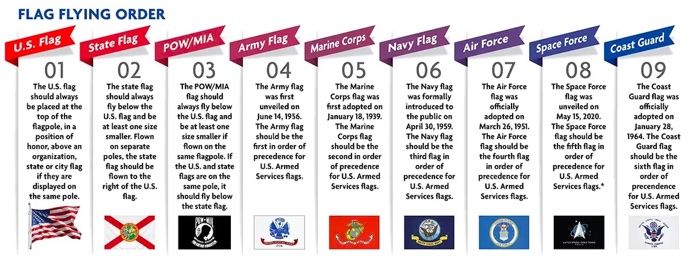
The Order of the Military Flags
As outlined in the Department of Defense Directive 1005.8:
1. The United States Flag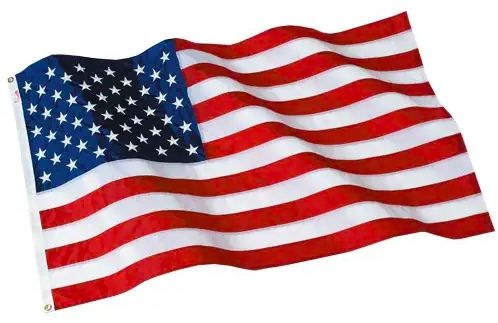
The American flag holds a position of utmost importance in flag displays. It represents the U.S. Government, which is the highest authority in the nation. According to the U.S. Flag Code, no other flag should fly above the American flag.
2. State Flag
All state flags should fly to the audience's right of the U.S. flag. This order represents its authoritative status right below the U.S. Government.
3. The POW/MIA Flag
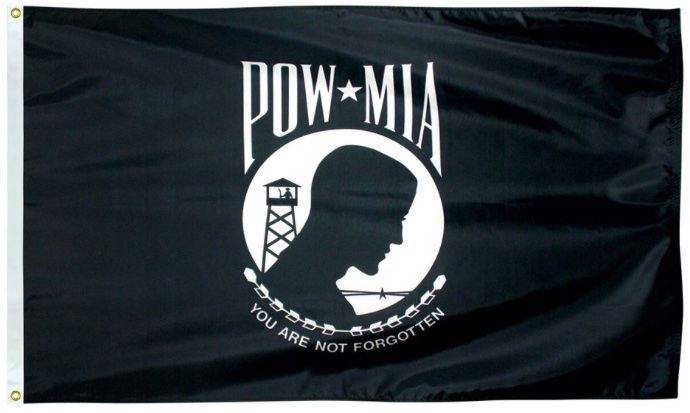 In the line of procession, the POW/MIA flag flies third, besides the state flag and in front of the Army flag. This ensign honors the brave service men and women who gave everything defending America's freedom.
In the line of procession, the POW/MIA flag flies third, besides the state flag and in front of the Army flag. This ensign honors the brave service men and women who gave everything defending America's freedom.
4. The Army - June 14, 1775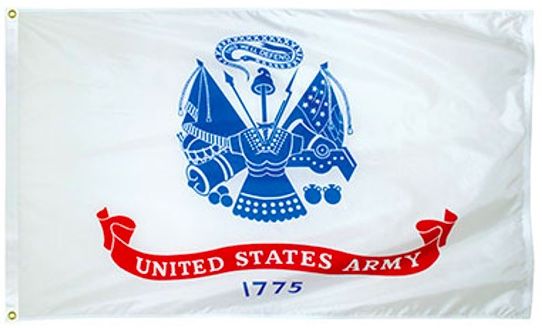
The United States Army was the first branch of the military, founded by the Second Continental Congress in 1775. Its original job was to protect citizens in the thirteen colonies from the British, and it has continued to be a beacon of enduring strength and freedom. The Army flag flies after the POW/MIA flag in the line of precedence.
5. The Marine Corps - November 10, 1775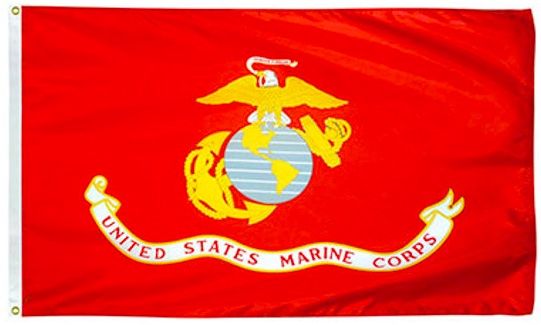
The Marine Corps is the second oldest branch of the armed forces, founded by the Continental Congress in 1775 as a specialized force to serve as landing forces within the country's fleet. In 1834, they became a part of the U.S. Navy to aid in their operations. While operating under the Department of the Navy, the Marines perform land-based and amphibious duties, executing over 300 foreign shore landings since 1775.
6. The Navy - October 13, 1775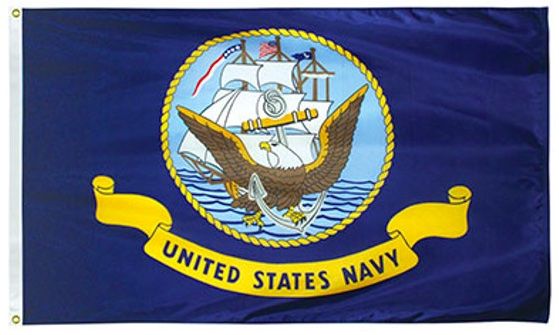
The Navy was formed in 1775 under the command of Esek Hopkins with 60 ships, an impressive feat for the Revolutionary era. The branch was designed to eliminate British warships in their home waters. Their success led to the surrender of British forces in multiple cities, including Savannah, Charleston, and Wilmington. Currently, the Navy is the second largest branch with around 336,978 active-duty military personnel.
7. The Air Force - September 18, 1947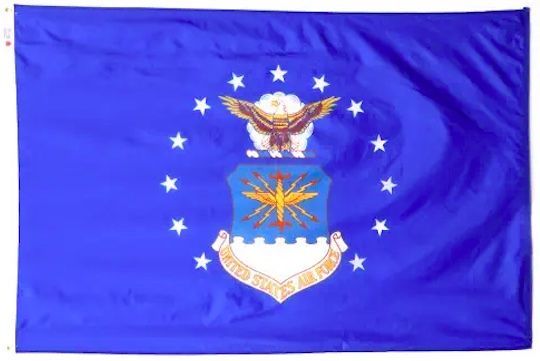
For over 150 years, the U.S. had only three branches of the military until the DoD established the Air Force in 1947. Originally an offshoot of the Army Signal Corps, it was adopted as a separate branch by the National Security Act of 1947. The Air Force is responsible for transporting the president, rapid global mobility, intelligence, air superiority, reconnaissance, surveillance, command and control.
8. The Space Force - December 20, 2019
The U.S. Space Force is the newest addition to the branches of military service. It is responsible for managing space launches and protecting the U.S. and its allies in space.
9. The Coast Guard - August 4, 1790
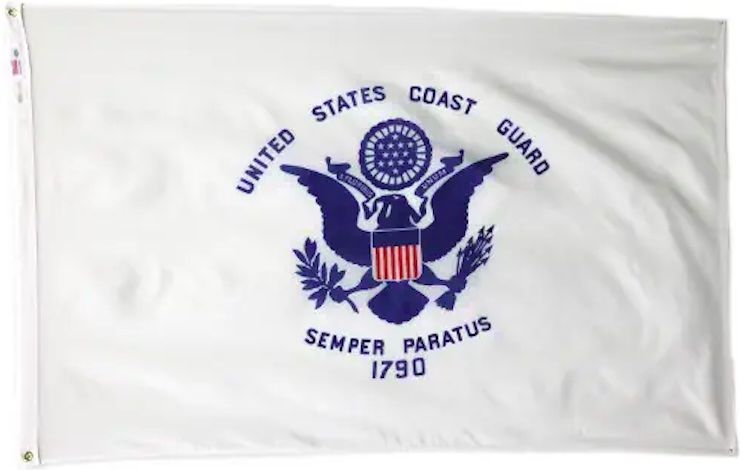 The Coast Guard flag is typically displayed last in the military flag flying order even though it is older than the U.S. Air Force and its respective offshoot, the Space Force. This is because the Coast Guard falls under the jurisdiction of the Department of Homeland Security during peacetime. During wartime, this changes, and the Coast Guard operates the Department of Defense. During war, the Coast Guard flag flies between the Navy and the Air Force, matching the date of origin or birthday rule.
The Coast Guard flag is typically displayed last in the military flag flying order even though it is older than the U.S. Air Force and its respective offshoot, the Space Force. This is because the Coast Guard falls under the jurisdiction of the Department of Homeland Security during peacetime. During wartime, this changes, and the Coast Guard operates the Department of Defense. During war, the Coast Guard flag flies between the Navy and the Air Force, matching the date of origin or birthday rule.









